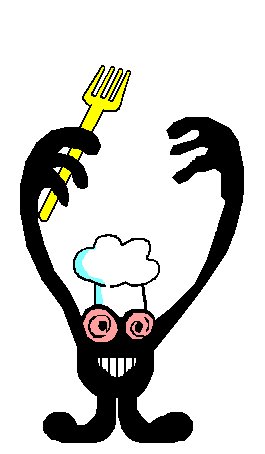- Lake County News Reports
- Posted On
Foodie Freak: Duck, the green meat

Duck season!
Wabbit season!
Duck season!
Wabbit season!
To set the record straight, duck season ended recently here in Lake County. Wabbit, er, rabbit season never closes.
Most of us in the area have heard the familiar sounds of gunshots in the morning during the colder months of the year when duck season is open, and duck is readily available in grocery stores.
Rabbit is also seen in stores on occasion, but since Bugs usually gets all the good press I’m going to
promote Daffy today.
I gave up hunting years ago and a part of me regret it since I would love to have a supply of wild game on a regular basis. Our county has such a bounty of wild boar, geese, hare, turkey and deer, not to
forget the ducks.
At times I wish I could hunt, but I gave it up for very good reasons and I won’t go back. But if anybody has any extra wild game they don’t want, I won’t turn it down.
I usually purchase two ducks per month from the grocery store, not just because I love the flavor but it’s usually about $1.99 per pound which makes it far cheaper than beef. This makes it very economical to feed my family. I can usually make two meals out of one duck, so if you do the math you’ll see we eat duck about four times a month.
On other birds you buy in the grocery store, like chicken, capon and turkey, you get both light and dark meat. That is because these birds are so domesticated that they don’t use their wings to fly and so the
meat on the breast is very light. Since ducks do use their wings actively the breast meat is dark; there is no white meat on a duck.
The dark meat of duck isn’t like the dark meat of other fowl since it is leaner, firmer and more reminiscent of beef than of bird. It’s also perfectly acceptable for the meat to be served rare, the way most gourmands prefer it.
Cooking a duck breast to an internal temperature of 155 degrees then removing it from the heat and letting carry-over heat finish the breast as it rests for a couple minutes will give you best results.
While there are several breeds of domesticated duck that you will find available, the most common is the White Pekin (PEE-kin). Most people consider it to have the best flavor, the right amount of fat, the
highest weight to meat ratio, and is the least “gamey.” Don’t confuse the “Pekin” duck with “Peking” duck since one is a bird and the other is a recipe FOR the bird.
Both farmed and wild ducks feed on natural foods, though what the farmed birds eat is more controlled. The domesticated ducks eat corn, wheat and soybeans, and are given no antibiotics, steroids or gross
stuff. Wild ducks are opportunistic feeders eating almost any aquatic life that it can swallow, including grasses, grains, etc.
Ducks have a comb-like system on the inside of their bills that allows them to open their bills in the water, take in some water, close their mouths, then squeeze the water out of their bills while keeping any critters from getting out.
Imagine taking in a mouthful of chicken noodle soup, then closing your teeth and spitting the soup out, the chicken, veggies and noodles would be trapped in your mouth while the liquid would be expelled.
If a duck sticks their tail up in the air and their head down to the bottom of the water to eat then they are called “dabbling ducks” (shelducks, perching ducks and diving ducks are other categories). White Pekins are dabbling ducks.
If you are a believer of the adage, “You are what you eat,” this would mean domesticated ducks taste clean and fresh while wild ducks taste like mosquito larvae, worms, snails and algae, i.e., gamey.
While many people like myself love the gamey flavor of wild game it can get old after a while, so
farm raised duck is a great every day type of meat.
Duck skin has a thick layer of fat underneath it. Of course, fat floats and keeps you warm, the two things a duck needs. This fat is popular among chefs to cook all sorts of things since it is rich and
has a high smoke point.
When I get a duck I use all of it, up to its full potential. First, when I’m dismembering a duck I cut out any fat and excess skin I can find, and there’s lots of it. I put it in a sauce pan on low heat until the fat is rendered. I then pour that fat into jars marked “duck pudge” and store it in the refrigerator. I use this rendered fat to cook cubed potatoes with rosemary and a little salt and pepper. It’s a family favorite in our house.
Then I make a stock out of the duck bones with some onions, carrots, mushrooms, garlic and pepper, and it comes out thick and hearty, with a flavor similar to beef stock. Duck meat is very versatile too.
Michael Ruellman’s book “Charcuterie” has an amazing “Duck Prosciutto” recipe that I make on a regular basis.
A boneless, skinless, duck breast has 40-percent less fat than a similar chicken breast. Duck is high in iron, niacin, and selenium but lower in calories than most other meats. While duck skin has a considerable fat under it, the meat itself is very low in fat, including saturated fats. Since my family is trying to eat healthier, duck fits in perfectly with our needs.
In my opinion duck is an environmentally “green” meat. (Finally, the title of the column makes sense!)
Duck farms produce their meat more quickly than beef, acre per acre, so they produce more protein on less land. The ducklings hatch and grow for about six to eight weeks before being “processed,” at which point they are around 6 to 7 pounds in weight.
When they reach harvest size ducks are processed and immediately frozen which protects the meat from bruising or spoilage on their way to you. The ducks heads and other by-products are used to
make pet foods, their bedding is composted and used as fertilizer for vegetable farms, and the feathers are used in the bedding and clothing industry.
A duck’s feed conversion is 2 to 1, meaning for every 2 pounds of feed it eats, it grows by 1 pound, compared to pork at a ratio of 4 to 1, and beef being up to 10 to 1. So duck produces more food to less feed than most other meat animals. This makes duck a very efficient protein source.
Ducks are also raised in humane, clean conditions, typically on family-owned farms by people who really care about the little waddlers. They rise at the quack of dawn, have breakfast with quackers, and spend their day indoors so they don’t have to experience any fowl weather or worry about predators. They eat good food and are never charged for it, it just goes on their bill.
They don’t live in cages, but rather in large barns with plenty of room to exercise. Ducks have a good (low carbon footprint) life. So not only is the meat healthier for you but it’s healthier for the planet.
By the way, numerous studies have found that duck quacks DO echo, so don’t believe those e-mails of weird facts.
Having duck also gives you the feeling that the food is going to be more special. For example, just the thought of “duck spring rolls” as opposed to “chicken spring rolls” makes quite a different impression
on your feelings of the dish. The duck makes you think, “Oooh, how exotic.”
So duck is a superior product all across the board and is economical and environmentally friendly – “The green meat.”
Yoikes! And away!
Ross A. Christensen is an award-winning gardener and gourmet cook. He is the author of "Sushi A to Z, The Ultimate Guide" and is currently working on a new book. He has been a public speaker for many years and enjoys being involved in the community. Follow him on Twitter, http://twitter.com/Foodiefreak .
Follow Lake County News on Twitter at http://twitter.com/LakeCoNews and on Facebook at http://www.facebook.com/pages/Lake-County-News/143156775604?ref=mf .









